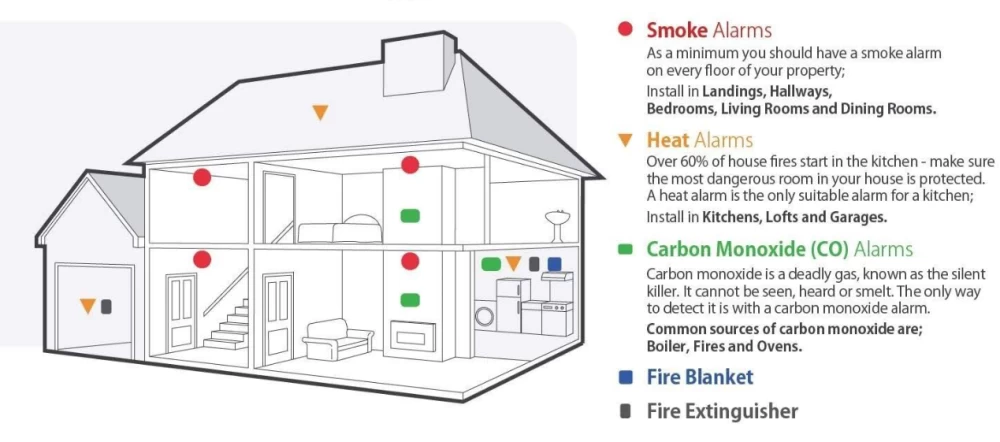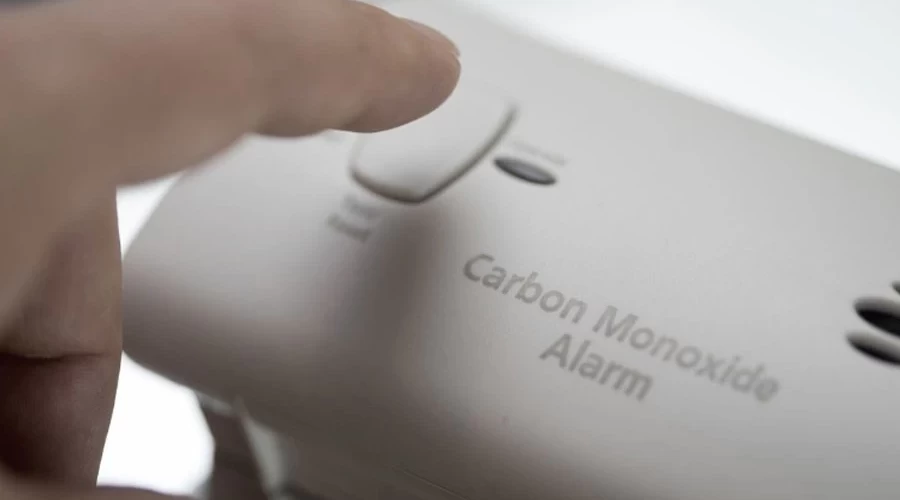Table of Contents
- What are the updated regulations for carbon monoxide alarms?
- Understanding Carbon Monoxide: Sources and Dangers
- Carbon Monoxide Detectors: Types and Functionality
- What is the recommended placement for carbon monoxide alarms?
- What does the term "fixed combustion appliance" mean?
- What to Do in Case of a CO Leak
- Additional Safety Measures and Precautions
- How can landlords prove compliance?
- Protect Your Home and Family
What are the updated regulations for carbon monoxide alarms?
A carbon monoxide alarm must be installed in any room utilized as living accommodation that houses a fixed combustion appliance, with the exception of gas cookers.
One of the most significant changes for landlords under these revised regulations is the responsibility to repair or replace carbon monoxide alarms upon being notified by a tenant. Previously, landlords were only accountable for installing and testing alarms at the beginning of a tenancy, while tenants were primarily responsible for maintenance and replacement during the tenancy.
Understanding Carbon Monoxide: Sources and Dangers
Carbon monoxide is a byproduct of incomplete combustion of natural gas, oil, wood, and coal fuels. The most common sources of CO in your home can include:
- Furnaces
- Gas water heaters
- Gas or wood-burning fireplaces
- Boilers
- Gas stoves
- Gas dryers
- Generators
When these appliances malfunction or are not properly ventilated, carbon monoxide can accumulate in your home and cause CO poisoning. The symptoms of CO poisoning can vary, but they often include:
- Headaches
- Dizziness
- Nausea
- Shortness of breath
- Confusion
- Weakness
- Loss of consciousness
In severe cases, prolonged exposure to high levels of CO can result in death.
Carbon Monoxide Detectors: Types and Functionality
Several types of carbon monoxide detectors are available on the market, each with unique features and functionality. The main types include:
- Electrochemical CO detectors - These detectors use an electrochemical sensor that measures the concentration of CO in the air. They are highly accurate and have a longer lifespan than other detectors.
- Metal oxide semiconductor (MOS) CO detectors - These detectors use a heated metal oxide semiconductor that reacts with CO, triggering an alarm when CO levels are dangerous. These detectors are more affordable but may have a shorter lifespan.
- Biomimetic CO detectors - These detectors use a synthetic material that imitates the human body's response to CO, changing colour when exposed to high levels of CO. They are less common and may not be as reliable as other types of detectors.
The price of a carbon monoxide detector can vary, but they are generally quite affordable. High-quality detectors may cost around £25, which is a reasonable investment for such an essential safety device.
Opting for a significantly cheaper detector might not provide the same level of effectiveness, leaving you vulnerable to unknowingly breathing in the dangerous gas.
What is the recommended placement for carbon monoxide alarms?
There are no specific regulations outlining the exact location for carbon monoxide alarms.
A carbon monoxide alarm should be installed in each room used as living space that contains a fixed combustion appliance (excluding gas cookers).
While installing the alarms, landlords should adhere to the manufacturer's guidelines. Generally, carbon monoxide alarms should be situated at head height, either mounted on a wall or placed on a shelf, roughly 1-3 meters away from a potential carbon monoxide source.

What does the term "fixed combustion appliance" mean?
A fixed combustion appliance, with the exception of gas cookers, is any stationary device that burns fuel to generate heat and requires a carbon monoxide alarm installed in its vicinity. This encompasses appliances fueled by gas, oil, coal, wood, and other similar sources, including gas or oil boilers and wood-burning stoves.
A decorative fireplace that is non-operational would not be classified as a fixed combustion appliance.
What to Do in Case of a CO Leak
If your CO detector sounds an alarm or you suspect a CO leak, take the following steps immediately:
- Evacuate - Leave your home immediately, ensuring that everyone, including pets, is accounted for.
- Call for help - Once outside, call the gas emergency line on 0800 111 999
- Do not re-enter - Wait for professional assistance before re-entering your home. Do not attempt to locate or fix the source of the CO leak yourself.
Additional Safety Measures and Precautions
To further protect your home and family from CO poisoning, consider these additional safety measures:
- Install CO detectors in garages - If you have an attached garage, consider installing a CO detector to monitor CO levels, especially if you have gas-powered equipment or vehicles in the garage.
- Never use outdoor appliances indoors - Do not use outdoor equipment, such as grills or generators, inside your home or garage, as this can lead to CO buildup.
- Educate your family - Teach your family members about the dangers of CO poisoning and the steps to take if the CO detector sounds an alarm.
How can landlords prove compliance?
To ensure compliance, landlords should maintain documentation of alarm installation, testing, and repairs. In case of inquiries, the local housing authority will determine if the provided evidence confirms that the landlord has met the necessary requirements.
Performing an inventory on the tenancy's first day is an effective method for record-keeping. The landlord, or inventory clerk, can document the functioning and testing of alarms, and the tenant can sign the inventory as verification of its accuracy.
What additional safety obligations do landlords need to fulfil? The installation of smoke and carbon monoxide alarms is only a fraction of a landlord's safety duties. Landlords must also ensure their properties adhere to the following requirements:
- Annual gas safety inspection and record
- Electrical assessment and EICR (Electrical Installation Condition Report) every five years
- A valid Energy Performance Certificate
Protect Your Home and Family
Carbon monoxide testing is a crucial aspect of ensuring the safety of your home and family. By installing and maintaining CO detectors, conducting regular CO testing, and following the recommended safety measures, you can protect your loved ones from the invisible dangers of CO poisoning. Stay vigilant, and always prioritize the safety and well-being of your household.








